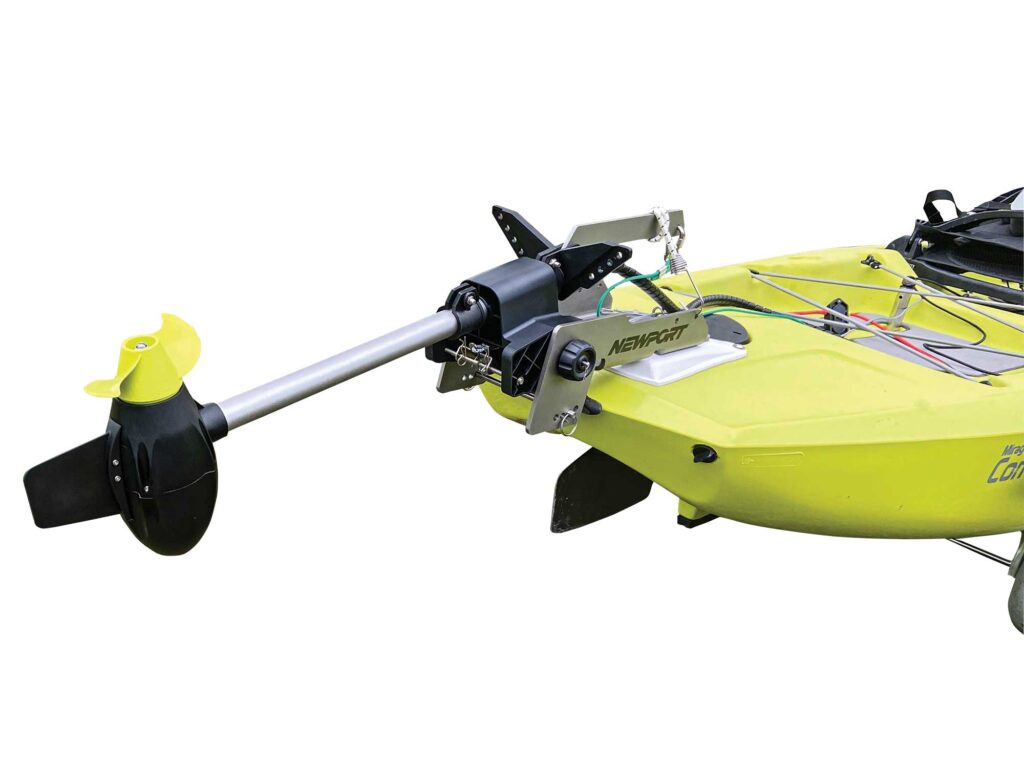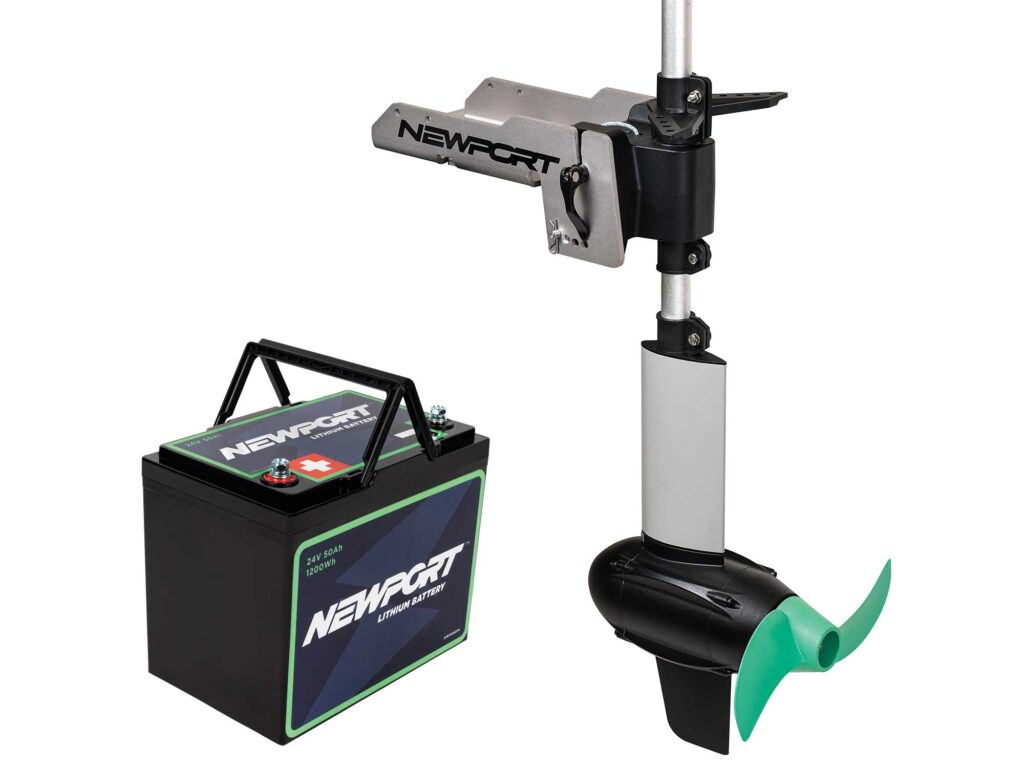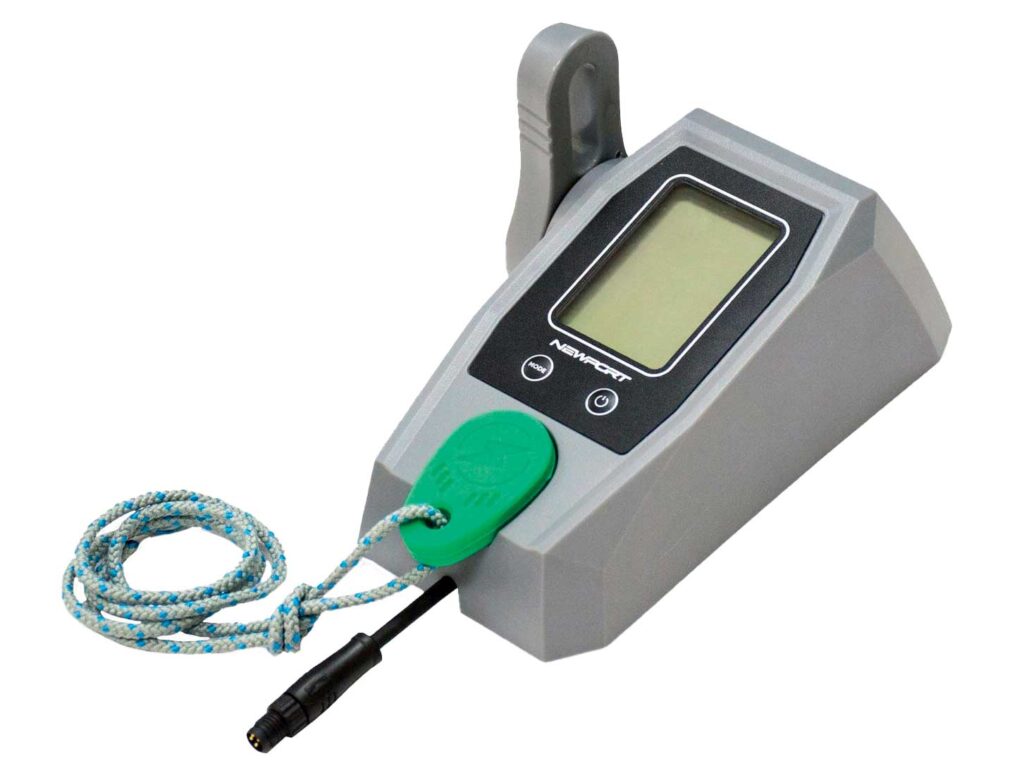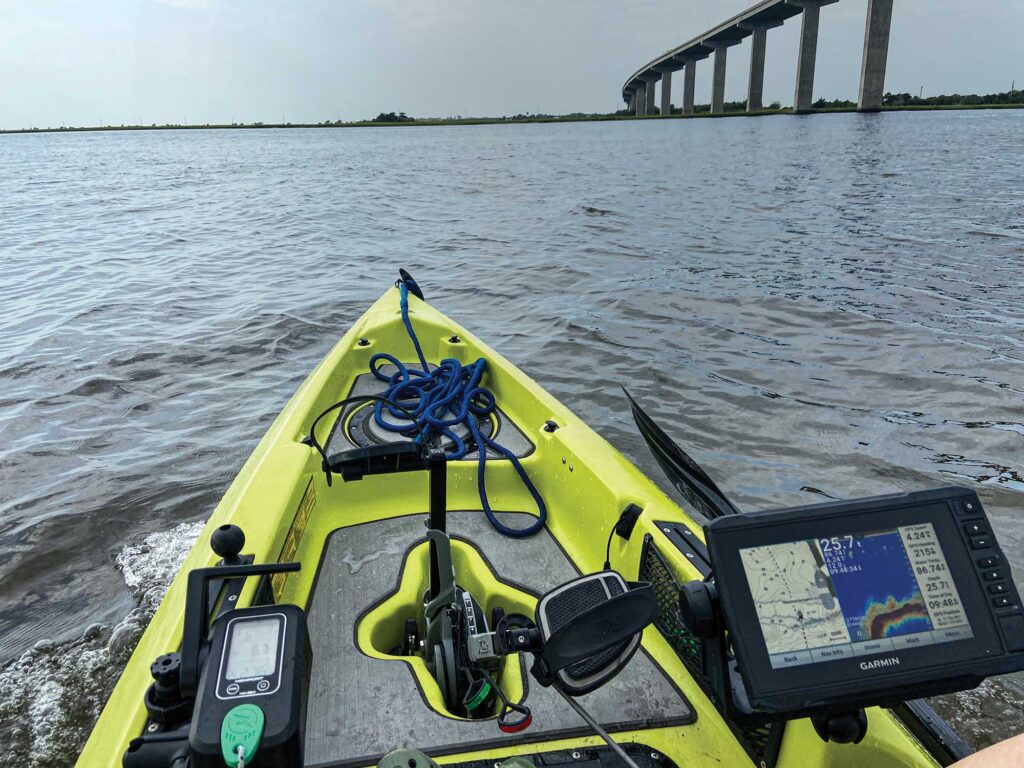SB Television
Installing an Electric Motor on a Kayak
 Lighter-weight kayaks such as the author’s Hobie Compass pair better with the 1.8 hp NK180 motor.
Chris Woodward
BUY NOW
Lighter-weight kayaks such as the author’s Hobie Compass pair better with the 1.8 hp NK180 motor.
Chris Woodward
BUY NOW
My kayak is now a boat. Sure, my Hobie Mirage Compass was a polyethylene fishing machine before, but it was pedal-powered. Now, a Newport NK180 electric kayak motor pushes my 12-foot vessel to far-flung fishing destinations—fast. My range doubled overnight, and now I return to the ramp almost as refreshed as when I left. The electric-motor transition is like switching from dial-up internet to fiber-optic cable. Once you experience the “eureka” moment, there’s no going back.
Point A to BI needed to cover 10 miles of ocean from the launch ramp to an island shoreline in order to chase tripletail, an esteemed gamefish. It seemed like a pipe dream—that is until Newport (newportvessels.com) suggested that I test one of its motors. The California company recently released the NK300 3 hp electric motor (kayak and boat versions) and a line of Bluetooth-enabled lithium iron phosphate (LiFePO4) batteries.
Since my Compass weighs just 68 pounds and its cockpit space is limited, the NK300 and its required pedal steering would not fit. Instead, I installed the 1.8 hp, 14.3-pound NK180 (compared with 25.5 pounds for the NK300), which pairs with a 24-volt LiFePO4 battery (37 pounds).
“The 180 is a great motor all around, but the 300 gives those people with bigger performance kayaks and tournament anglers an edge,” Newport marketing manager Howie Strech told me.
Electric Motor vs. Trolling MotorNewport’s kayak motors mount astern and fit nearly any 10- to 14-foot ’yak that sports a flat horizontal surface aft. Lacking a tiller, the new NK300 turns using cables that are controlled by foot pedals or a bespoke hand lever designed by Tim Percy Kayak Fishing. Strech told me that I could use my Hobie’s existing rudder to steer.
 Newport offers a range of motors (NK300 shown), batteries in various voltages (24-volt shown), plus accessories.
Courtesy Newport
BUY NOW
Newport offers a range of motors (NK300 shown), batteries in various voltages (24-volt shown), plus accessories.
Courtesy Newport
BUY NOW
Strech also explained that electric motors differ from trolling motors in several key ways: Trolling motors excel at low speeds and pinpoint maneuverability, but they’re not designed for maintaining a faster speed over longer distances. Newport’s direct-drive design with Field Oriented Control technology allows for smooth operation as low as 1 percent throttle up to 100 percent and 6.5 to 7 mph.
“Simply put, our thrust-to-motor-weight ratio is optimized. The NK180, for example, weighs about the same as a 30-pound-thrust trolling motor, but it generates twice the thrust.”
A Few Quick StepsThe NK180 installation went quickly. I ordered an adapter plate from Hobie that’s normally used for a Power-Pole Micro Anchor. That kept me from having to drill new holes. I assembled the motor, which comprises a traditional bullet-shaped lower unit with a prop and fin, a shaft, and several proprietary mechanisms that lift, lock, and steer the unit. I ran one parachute cord (provided) from the motor to a cleat in the cockpit. This allows me to lift the prop from the water. A second provided cord controls a lever that locks the motor down when in reverse.
 The controller provides lever operation, and displays voltage, percent of speed, and wattage.
Courtesy Newport
The controller provides lever operation, and displays voltage, percent of speed, and wattage.
Courtesy Newport
I charged the Newport 24V/50Ah lithium battery with its included 10-amp charger and checked it with its companion app. Newport says that charging takes about four hours when the battery measures 30 percent, and I found that to be accurate. The motor’s separate controller mounts on a track system, using a 1-inch ball and plate (available from RAM Mounts). The controller features a throttle lever that can shift into forward, neutral and reverse, and comes with a kill switch. The digital readout shows voltage, percent of speed and wattage.
Fresh or Salt WaterI launched the kayak at a nearby lake for its shakedown cruise. I had already mechanically trimmed the motor by canting the prop up slightly and securing it with a pin in the second of four possible trim positions. Ease into forward, and it instantly and quietly catches. At speeds of 3 to 5 mph, the boat turned quickly and responsively. Drop down to 2 mph, and the arc widens. Taking half of my kayak paddle and using it like a second rudder facilitated slow turns. At 100 percent throttle I notched 5 mph on a still, calm lake.
A week later, I launched at a saltwater ramp where tides change four times a day and currents can run 2 to 3 mph. I didn’t lose much speed going into the current, although I had some wind behind me. With the current (and into the wind), I hit nearly 6 mph.
Read Next: A Hobie Kayak Fishing Adventure
 The controller provides lever operation, and displays voltage, percent of speed, and wattage.
Chris Woodward
The controller provides lever operation, and displays voltage, percent of speed, and wattage.
Chris Woodward
For my tests, I kept my Hobie pedal drive in its well and the fins locked up against the hull. I tried removing the drive, but when I accelerated, water flooded up through the hull and into the cockpit. Strech suggests that kayakers keep the drive in or use the cassette plug that comes with the boat. Scuppers can also overflow with water, so plugs for those come in handy.
Ultimately, during my four-hour saltwater test run, I logged more than 8 miles. On the way back to the ramp, I motored for nearly an hour at 83 percent throttle. That’s the sweet spot: I got little extra speed from 100 percent throttle. Perhaps, most impressively, I used less than 50 percent of the battery’s charge. I could sense that pipe dream evolving.
Final StepsBreaking down the system for storage took only moments. Newport offers an optional battery quick-disconnect ($45.99) that I would quite honestly call essential. To remove the battery from the boat after use, I simply unplugged the connection. I unsnapped the two cords from the motor assembly and removed the motor from its bracket by unscrewing a long rod from the support drum.
Now, bring on the tripletail!
The post Installing an Electric Motor on a Kayak appeared first on Boating Mag.
- Home
- About Us
- Write For Us / Submit Content
- Advertising And Affiliates
- Feeds And Syndication
- Contact Us
- Login
- Privacy
All Rights Reserved. Copyright , Central Coast Communications, Inc.